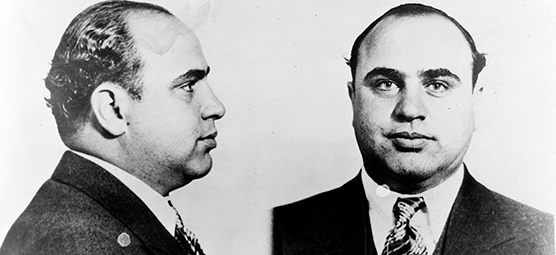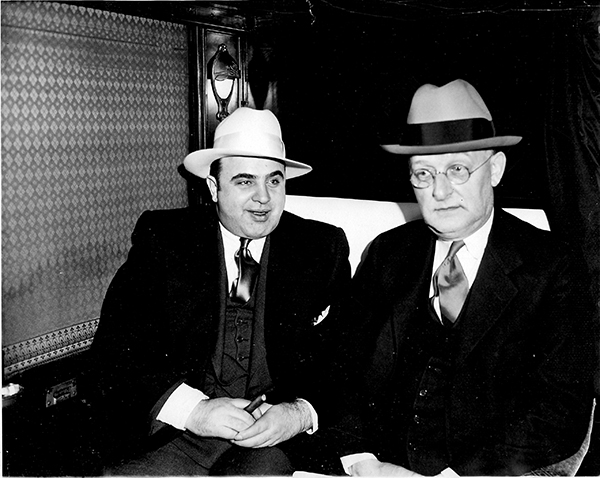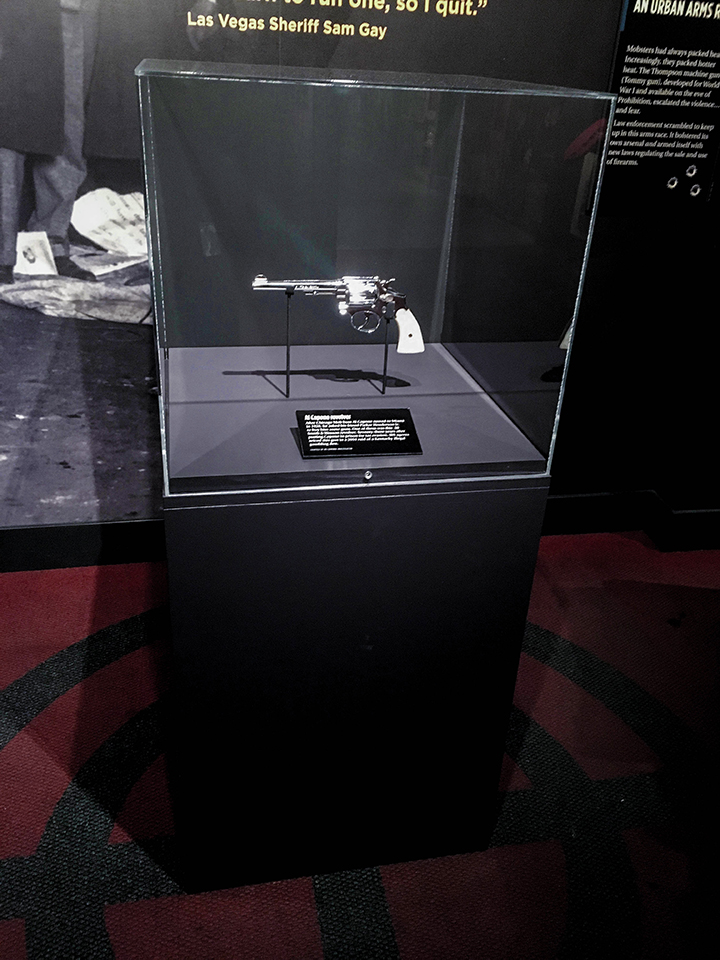Iconic Chicago Outfit boss Al Capone died 70 years ago today
America’s first celebrity gangster may be as well known today as during his high-profile life

Al “Scarface” Capone, the ruthless yet media-friendly Chicago Outfit boss during Prohibition, died of natural causes 70 years ago today, January 25, 1947, having spent the last years of his life battling mental illness in quiet retirement at his Palm Island estate in Miami, Florida. He was only 48 but left a legacy that still resonates today, his name forever embedded in pop culture lore as the first true celebrity gangster.

His final years in virtual seclusion in South Florida were in stark contrast to his reign atop the Midwest underworld in the 1920s and early ’30s. Capone and his organization ruled with an iron fist and left dozens of bodies in its wake to solidify power in the Windy City’s vast bootlegging industry. Most famously, Capone was said to have ordered the St. Valentine’s Day Massacre, the headline-grabbing murder of seven rivals in a crosstown Irish gang on the morning of February 14, 1929.
Unable to craft a successful criminal prosecution against him, the federal government set its sights on Capone’s finances. In 1931, he was convicted of tax evasion for failing to pay more than $200,000 in back income taxes and sentenced to 11 years in prison. He served his time in correctional facilities in Atlanta and California, including a three-year stint in the island prison of Alcatraz. Capone’s entrance physical exam with prison doctors in Atlanta revealed he had syphilis, the disease that eventually incapacitated him following his release.

Born and raised in Brooklyn, Capone moved to Chicago right when he turned 20 at the behest of a Mob mentor named John Torrio, another East Coast transplant. With the help of Capone, Torrio took over the Italian syndicate in the Windy City by arranging the assassination of his boss, James “Big Jim” Colosimo. Capone was considered a prime suspect as the triggerman in the Colosimo slaying on May 11, 1920. When Torrio retired to New York in 1925 after surviving an attempt on his life hatched by enemies on the North Side, he named Capone his successor.
Just 26 years old, the man they called Scarface because of a knife slash visible across his left cheek from a bar fight, was the king of Chicago, headquartering his activities out of the Lexington and Hawthorne hotels, forging deep ties into the longstanding Illinois Democratic political machine and gaining a reputation in the press just as big for flash as for ferocity. Capone wore expensive, custom-tailored suits, smoked fat, pricey cigars and sported gaudy jewelry, but was also fast to endear himself with the public by sponsoring food kitchens and free-soup lines for the poor and giving frequent, quip-filled interviews to reporters.
Capone’s various run-ins with the law and his subsequent conviction and incarceration attracted worldwide media attention. He was finally released from federal custody in 1939, his mind being ravaged by syphilis, a disease he most likely contracted in his younger days as a bouncer at a number of brothels. His first few months of freedom were spent in a Baltimore, Maryland, hospital receiving treatment for his worsening condition before settling in Miami in the Palm Island vacation property he bought for himself at the height of his power in the late 1920s.
Even though he had passed on control of his Chicago crime family to his cousin Frank “The Enforcer” Nitti and his one-time bodyguard Tony “The Big Tuna” Accardo, the FBI still kept heavy tabs on Capone during his retirement, monitoring his communications, visitors and limited travels. Several of Capone’s Prohibition-era Mob lieutenants made semi-regular visits to Palm Island in this period to pay respects to their former boss.
His wife, Mae, and his brother Ralph “Bottles” Capone were his primary caretakers, Bottles acting as the Capone family mouthpiece on the street, coordinating the visits with his former men. If Capone did make it back to the Midwest, it was usually to stay at his brother’s Wisconsin rural resort, not to his old Chicago stomping grounds – although Capone was said to often badger his wife and brother about a desire to relocate back to Illinois.
The final week of Capone’s life was a touch-and-go affair. He suffered a minor stroke on January 21 and contracted pneumonia in his immediate recovery. Two days later, he had a heart attack. Finally, Capone died in his sleep surrounded by his family in the evening hours of January 25. His body was transported back to Chicago to be buried in Mount Carmel Cemetery.
Based out of the Midwest, Scott M. Burnstein, 40, is an author, journalist and true-crime historian who has had five books on organized crime published in the last decade. He founded and runs The Gangster Report (www.gangsterreport.com) website. Burnstein writes daily for The Oakland Press in Metro Detroit and focuses on Mob activity in Detroit and Chicago.
Feedback or questions? Email blog@themobmuseum.org





